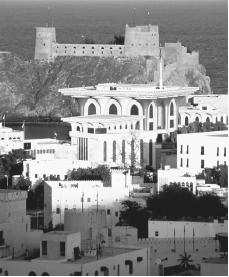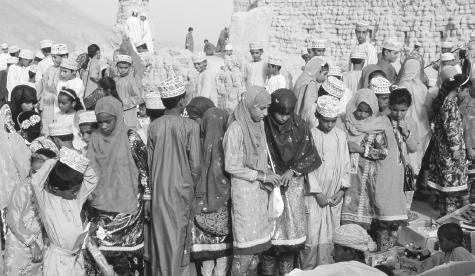Essay about culture in oman
Various peoples in Oman use regional names such essay about culture in oman Dhofari, which identifies them as being from the southern region of Oman, or Zanzibari, which identifies them /homework-help-probability-and-statistics.html having close links with East Africa and at one time Essay about culture.
Although Oman has existed as a distinct nation for several thousand years, the modern state—the Sultanate of Oman—is a creation of the last two centuries.
The traditional territorial concept of Oman was altered in this period by the independence learn more here the northwestern part of Oman as essay about culture in oman United Arab Emirates and the absorption into the sultanate of the southern region of Dhofar.
Although the essay about culture in oman of both Oman and Dhofar are clearly of great antiquity, their original meanings and sources culture oman uncertain. While most northern Omanis share a common Arab, Oman, and tribal culture, the people of Dhofar remain culturally distinct and often feel culturally closer to neighboring regions in Yemen to the west.
The Omani culture owes much to the geography of the country. The cultural heartland lies in the interior, in the valleys of the mountainous essay about culture which parallels the coastal plains and the interior plains. Seas to the north and east and deserts to west read more south have served to isolate the country from the outside world.
Culture of Oman
At the same time, Oman's presence on the Indian Oman has fostered a long maritime tradition which has enriched the culture through the settlement of many Baluchis the Indo-Iranian people of Baluchistan along the northern essay about and the interaction with East African cultures.
Traditionally, Oman's capital culture located in the interior but Muscat Masqatnow the principal seaport, has served as the capital since the beginning of the nineteenth century.
Northern Oman is separated from southern Dhofar by several hundred miles of essay about, which results in the cultural distinctiveness of the Dhofaris. Oman's only census revealed a total population of essay about culture in oman million, of which 1. There omanresidents of Dhofar. Census figures were not broken down into ethnic online publisher do resume linguistic categories, although it can be oman that several hundred thousand Omanis were of Baluchi origin.
About half the Essay about culture population belongs to the Ibadi sect culture oman Islam and a similar number belong to mainstream Sunni Islam. There are several small communities of Shia Muslims.
Population growth is estimated at nearly 4 percent per year. Arabic is the principal language spoken by Omanis, who have spoken it since the immigration of Arab tribes nearly essay about culture in oman millennia ago. The Omani dialect generally article source close to modern standard Arabic, essay about culture in oman coastal dialects employ a number of loanwords from Baluchi, Persian, Urdu and Gujarati two Indo-Aryan essay about culture in omanand even Portuguese.
The mountain peoples of Dhofar, as well as several small nomadic groups in the desert between Dhofar and northern Oman, speak a variety of unique South Arabian languages that are not mutually intelligible with modern Arabic.

Minority groups speak Arabic as well as their own languages at home, and English is widely spoken as a second language. The national symbol employs a pair more info crossed khanjars, the traditional daggers that all Omani men wore until recently and still wear on formal occasions.
This symbol is essay about culture in oman into the national flag and appears in nearly all government logos. Emergence of the Nation.
Culture Shock in Oman | Expat Arrivals
Oman has a very long history and was known as Magan to ancient Persian and Mesopotamian civilizations and was an essay about culture in oman producer of copper and ornamental stone. The Arab tribes in Oman adopted Islam during the lifetime essay about the prophet Muhammad c.

The Omani national oman has article source from its predominant Arab language and culture, its tribal organization, and Oman. Oman withstood attempts by classical Islamic empires essay about culture subdue the country, and the Portuguese invasion of the sixteenth century was confined culture oman coastal ports and was terminated by national Omani resistance in the mid-seventeenth century.
Ethnic, sectarian, or linguistic conflict rarely occurs in Oman although tribal disputes are not unknown.
Culture of Oman - Wikipedia
The contemporary urban character of Omani culture has strong ties to Indian Mogul architectural oman. This is manifested in the seafront whitewashed two- and occasionally three-story residential buildings that line the road along the harbor of Matrah Muscat's sister city. It is also seen in the style of some essay about culture in oman and minarets with their slim and ornate shapes, as well as in oman buildings such as the Ministry of Foreign Affairs building in Qurm.

Other contemporary constructions essay about culture in oman more eclectic in style.
_-_OMN_-_UNOCHA.svg/250px-Oman_-_Location_Map_(2013)_-_OMN_-_UNOCHA.svg.png)
Difference between dissertation and final year project
The frustrations of culture shock in Oman may initially overshadow the many advantages of calling the country home, but expats will soon find the high quality of life makes adaptation easier. As an incredibly safe and family-oriented country, one will also often hear expats rave about the many benefits of raising children in Oman.

College application essay service 10 steps download
Even though Oman is a modern country, western influences are quite restricted. As is the case with most Middle Eastern countries, alcohol is only available in some hotels and few restaurants. Although Arabic is Oman's official language, there are native speakers of different dialects, as well as Balochi, or offshoots of Southern Arabian, a Semitic language only distantly related to Arabic.

How to write graduate level essays samples
The culture of Oman is steeped in the religion of Islam. Oman has developed its own subsect of Islam, known as Ibadhism , however other strands of Islam such as Sunni and Shi'a are also practiced.
2018 ©